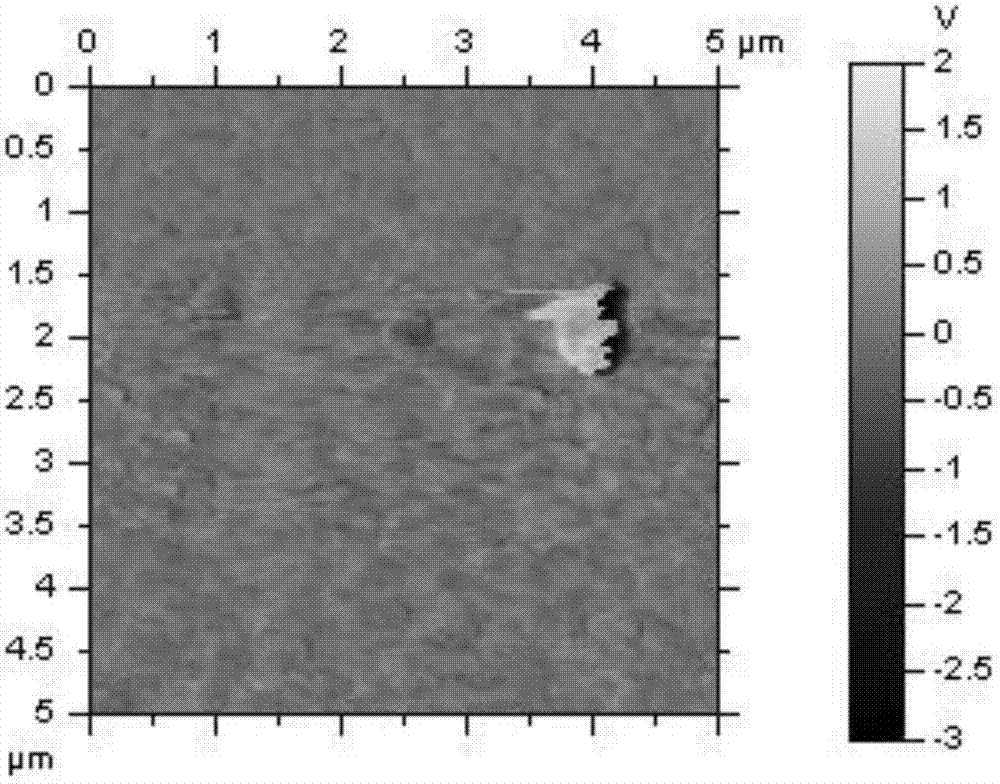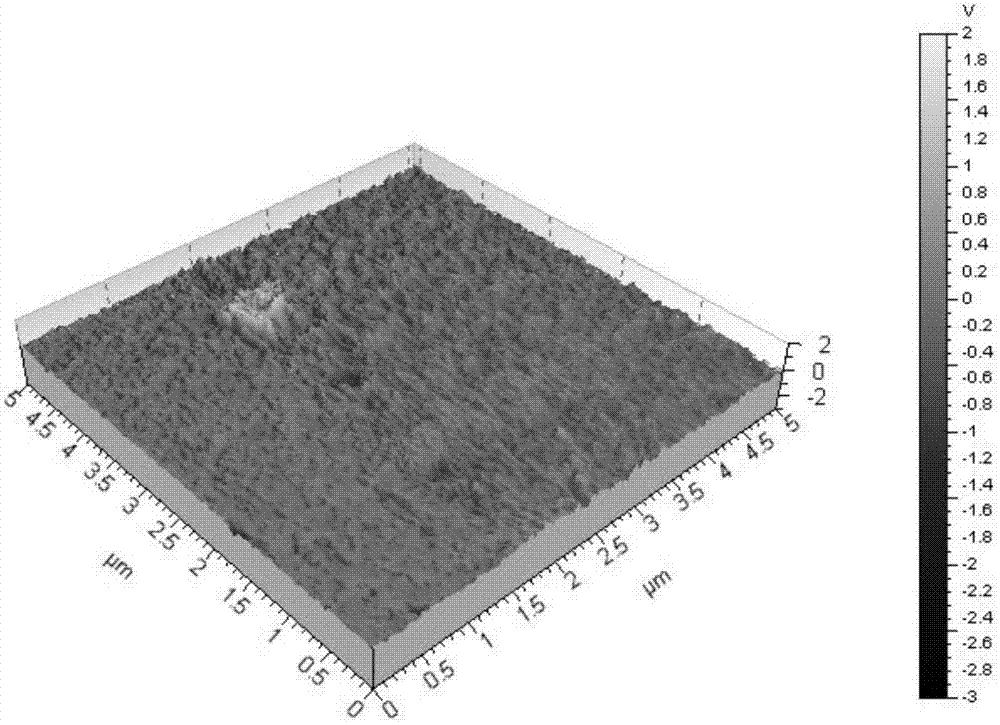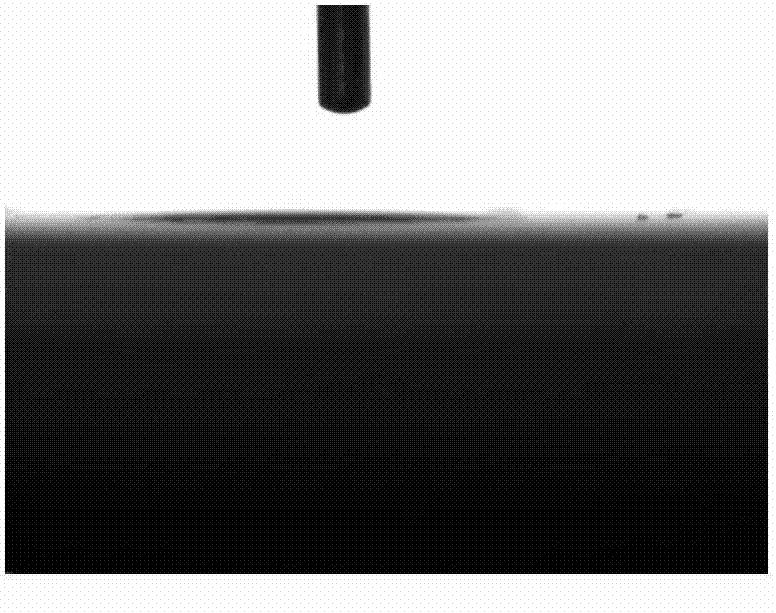Preparation method of anti-reflection self-cleaning coated glass
A coated glass and self-cleaning technology, which is applied in the field of preparation of anti-reflection and self-cleaning coated glass, can solve the problems of poor UV aging resistance, unsatisfactory self-cleaning effect, and inability to achieve super-hydrophilicity, etc., and achieve UV aging resistance Excellent, improve the visible light transmittance, reduce the temperature effect
- Summary
- Abstract
- Description
- Claims
- Application Information
AI Technical Summary
Problems solved by technology
Method used
Image
Examples
preparation example Construction
[0023] The present invention relates to a kind of preparation method of anti-reflection self-cleaning coated glass, which comprises the following steps:
[0024] Step 1. Preparation of SiO 2 -TiO 2 Composite sol: nano-SiO 2 Sol and Nano TiO 2 The sol is mixed according to the silicon-titanium molar ratio of 1:5-30, stirred evenly, then an acid catalyst is added dropwise to adjust the pH value of the mixed sol to 2-4, and the stirring is continued to obtain the SiO 2 -TiO 2 Composite sol;
[0025] Step 2. Coating by pulling method: first put the clean glass substrate on the pulling machine, and then put the glass substrate on the SiO 2 -TiO 2 After fully immersing in the composite sol for 5-20 minutes, pull it up at a pulling rate of 1-20cm / min, and then let the glass substrate with the wet film attached to it dry at room temperature for 10-20 minutes, and the surface of the glass substrate forms a The layer has a roughness nano film layer;
[0026] Step 3. Post-treatme...
Embodiment 1
[0028] Step 1. Preparation of TiO 2 Sol:
[0029] Anatase TiO 2 The powder is completely dissolved in deionized water, anatase TiO 2 The molar ratio of powder to deionized water is 1:5 to obtain the TiO 2 Sol;
[0030] Step 2. Preparation of SiO 2 Sol:
[0031] Weigh tetraethyl orthosilicate, absolute ethanol, deionized water and acid catalyst (30% nitric acid aqueous solution) with a molar ratio of 1:15:1:0.001, dilute ethyl orthosilicate with absolute ethanol, The mixed solution of acid catalyst and deionized water was added dropwise, the above mixed solution was stirred and reacted for 4 hours at 20°C, and then aged for 1 day, and the reacted mixed solution was diluted 1.2 times with additional absolute ethanol to obtain The SiO 2 Sol, spare;
[0032] Step 3. Preparation of SiO 2 -TiO 2 Composite sol:
[0033] nano-SiO 2 Sol and Nano TiO 2 The sol is mixed according to the silicon-titanium molar ratio of 1:5, stirred evenly, and then an acid catalyst (30% nitri...
Embodiment 2
[0039] Step 1. Preparation of TiO 2 Sol:
[0040] Anatase TiO 2 The powder is completely dissolved in deionized water, anatase TiO 2 The molar ratio of powder to deionized water is 1:30 to obtain the TiO 2 Sol;
[0041] Step 2. Preparation of SiO 2 Sol:
[0042] Weigh tetraethyl orthosilicate, absolute ethanol, deionized water and acid catalyst (20% sulfuric acid aqueous solution) with a molar ratio of 1:30:5:0.01, dilute ethyl orthosilicate with absolute ethanol, drop Add the mixed solution of acid catalyst and deionized water, ultrasonically react the above mixed solution at 30°C for 20 minutes, let it stand for aging for 2 days, and then dilute the reacted mixed solution by 0.8 times with additional absolute ethanol to obtain the obtained SiO 2 Sol, spare;
[0043] Step 3. Preparation of SiO 2 -TiO 2 Composite sol:
[0044] nano-SiO 2 Sol and Nano TiO 2 The sol is mixed according to the silicon-titanium molar ratio of 1:30, stirred evenly, and then an acid cata...
PUM
 Login to View More
Login to View More Abstract
Description
Claims
Application Information
 Login to View More
Login to View More - R&D
- Intellectual Property
- Life Sciences
- Materials
- Tech Scout
- Unparalleled Data Quality
- Higher Quality Content
- 60% Fewer Hallucinations
Browse by: Latest US Patents, China's latest patents, Technical Efficacy Thesaurus, Application Domain, Technology Topic, Popular Technical Reports.
© 2025 PatSnap. All rights reserved.Legal|Privacy policy|Modern Slavery Act Transparency Statement|Sitemap|About US| Contact US: help@patsnap.com



